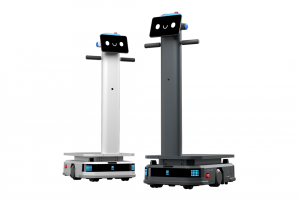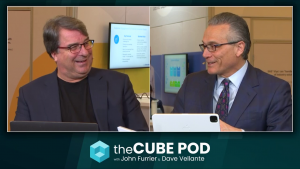What VSAN means for the software-defined data center : Watch theCUBE Conversations
![]() The explosive growth of information and the rapid adoption of converged infrastructure and flash memory are driving the emergence of a new paradigm Wikibon defined as “Server SAN” in a February paper. The architecture addresses the same operational challenges as the hyperscale model pioneered by the early web giants, and overlaps from a technological standpoint as well, enabling integrated compute and storage that can be seamlessly scaled as needed. Stu Miniman, the author of the report, appeared on the latest episode of SiliconANGLE’s Cube Conversations series to place Server SAN in the broader context of the software-defined data center – and VMware’s own particular vision for it.
The explosive growth of information and the rapid adoption of converged infrastructure and flash memory are driving the emergence of a new paradigm Wikibon defined as “Server SAN” in a February paper. The architecture addresses the same operational challenges as the hyperscale model pioneered by the early web giants, and overlaps from a technological standpoint as well, enabling integrated compute and storage that can be seamlessly scaled as needed. Stu Miniman, the author of the report, appeared on the latest episode of SiliconANGLE’s Cube Conversations series to place Server SAN in the broader context of the software-defined data center – and VMware’s own particular vision for it.
After six months of extensive beta testing, the virtualization giant this week launched Virtual SAN, a programmable storage feature built directly into vSphere that pools capacity from multiple hosts. Miniman views the announcement as a major strategic milestone in the company’s efforts to push back against the tide of commoditization that is sweeping through the hypervisor market.
“Not only is VMware the leader in hypervisors and server virtualization, but when they pushed forward what they called the software-defined data center vision, they really looked at how to extend the benefits of server virtualization across the storage and network stack, and Virtual SAN or VSAN is how they’re gonna do that in storage,” Miniman says.
Several startups have been offering solutions that provide similar functionality to VSAN for a while now, but VMware’s entry into this space may just be the catalyst that will propel the technology into the enterprise mainstream, according to Miniman. Yet the product poses a serious threat to many of these firms, as well as traditional storage vendors and rivaling hypervisors such as Hyper-V.
For Microsoft in particular, there are several ways to go about matching VMware’s solution, notably embedding software-defined storage functionality in the guest or other components of the stack as opposed to the virtualization layer. “It is not a cut-and-dry one-is-definitely-better-than-the-other [approach], there are tradeoffs,” Miniman details. “Being in the hypervisor should allow for less CPU utilization, which in general is good, but there could be some tradeoffs as to how much functionality can be put into the hypervisor and it’s not necessarily all that open.” This presents an opening that is already being exploited by the likes of Nutanix and Citrix.
The addition of software-defined storage functionality to vSphere is an important and arguably necessary evolution of the solution, but the move could nonetheless backlash for VMware, which has always relied heavily on channel partnerships and technology alliances for business growth. Miniman highlights that VSAN may significantly diminish the revenue of certain professional services providers in the company’s ecosystem while adding tension to its relations with storage partners such as HP. But at the same time, the software will also create new opportunities for server and converged infrastructure providers – and most importantly, drive license revenue for VMware itself.
“This is an example where VMware is gonna try to make people ‘stick’ on vSphere while some of the other VMware solutions, NSX on the networking side, can work across many hypervisors,” Miniman elaborates. “It’s a bit nuanced, [there] a lot of layers as to where VMware fits; it’s a mixed message on the ecosystem’s part.” As a result, many of the firm’s partners are “hedging their bets” and adding support for competing hypervisors in a bid to give customers the freedom to choose the product that best suits their requirements.
Some of this uncertainty may fade over time as customers warm up to VSAN, just as has happened with vSphere, but at present the software is simply not yet mature enough to support mission-critical workloads. It does however present a compelling value proposition for some lower priority use cases such as desktop virtualization, test and development and online analytical processing,” according to Miniman.
photo: kevin dooley via photopin cc
A message from John Furrier, co-founder of SiliconANGLE:
Your vote of support is important to us and it helps us keep the content FREE.
One click below supports our mission to provide free, deep, and relevant content.
Join our community on YouTube
Join the community that includes more than 15,000 #CubeAlumni experts, including Amazon.com CEO Andy Jassy, Dell Technologies founder and CEO Michael Dell, Intel CEO Pat Gelsinger, and many more luminaries and experts.
THANK YOU













